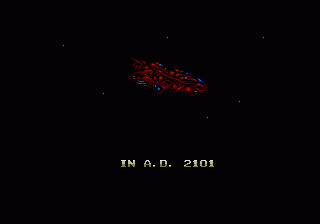Carlos got us passes to go to a Maxim/Budweiser party last night. Click on the photo above to see a few pictures.
All posts by kirsch
All your base are belong to us

What you say?
Somebody set up us the bomb!
.Mac sidebar broken
Damn it. As you can see, the .Mac sidebar thingie is broken, so there are no links to my .Mac albums on this page for now. This happened because Apple changed the way they generate the album pages. I need to fix it, but I don’t know how soon it’ll happen.
[Update 7/19/2005] There is also a warning at the top of the page. Man I suck!
[Update 7/24/2005].Mac sidebar has been fixed. You can now see the links to the albums directly over there.
Trip to the Gold Cup
This past weekend, Carlos, Ruben, Jaramillo and I went to Houston to watch the quarter final match between Mexico and Colombia in the 2005 Gold Cup.
Unlucky weekend: Mexico lost 2-1. I lost the coin-toss to see who drives from Austin to Houston. And despite our best efforts (see picture above) we could not make it on TV. Those “lucky socks” I was wearing turned out not to be so lucky. I’ll have to go back to my unwashed lucky underwear (damn it!).
The trip was a lot of fun though, we got to see many people and went out to the new Planeta Bar-Rio which is exactly like another Bar in Monterrey…
I have posted two albums with pictures from the trip: see photos and more photos. I’m still waiting on more pictures taken by Jaramillo and Gustavo.
Like Two Little Angels
Like Two Little Angels
Originally uploaded by kirsch.
Austin City Limits: Café Tacuba

(Thanks to Jaramillo who went early and got in line to get the tickets)
Update 7/12/2005: Just returned from the concert. It was much longer and better…
May the force be with you
Coming soon: photos from the move…
May the force be with youOriginally uploaded by moikirsch.
Update 7/12/2005: Moi did not send the pictures so I’ll just link to his flickr album
Where’s Marcos?
I haven’t posted in about two weeks. Bad Marcos!
I don’t want this blog to become a digital ghost town. I have just been way too busy. I moved last week so the week before and after have been about that (and work, of course). This long weekend I could stay and do some more work in my new place but instead I’m going to go to Monterrey.
More about "The Lair/La Guarida" in a future post.
PS: Thanks to everybody that helped with the move – especially my mom, Moi and my cousin Jacobo (official water boy). Without them, I would still be surrounded by boxes.
Batman Begins
Sooooo much better than any of the previous Batman movies, even the one with Jack Nicholson. I just hope hope hope they don’t screw up Superman next year.
PS: I want a Batmobile.
Macintel: The aftermath
HER DIARY:
Saturday, May 21st 2005
Saw him in the evening and he was acting really strangely. I went shopping in the afternoon with the girls and I did turn up a bit late so thought it might be that. The bar was really crowded and loud so I suggested we go somewhere quieter to talk. He was still very subdued and distracted so I suggested we go somewhere nice to eat. All through dinner he just didn’t seem himself; he hardly laughed and didn’t seem to be paying any attention to me or to what I was saying. I just knew that something was wrong. He dropped me back home and I wondered if he was going to come in; he hesitated but followed. I asked him again if there was something the matter but he just half shook his head and turned the television on. After about 10 minutes of Silence, I said I was going upstairs to bed. I put my arms around him and told him that I loved him deeply. He just gave a sigh and a sad sort of smile. He didn’t follow me up but later he did, and I was surprised when we made love. He still seemed distant and a bit cold, and I started to think that he was going to leave me and that he had found someone else. I cried myself to sleep.
MAN’S DIARY:
Saturday, May 21st 2005
Apple switched to Intel.
Absolutely gutted.
Got a shag though.
Thanks to Jaramillo for the link.



